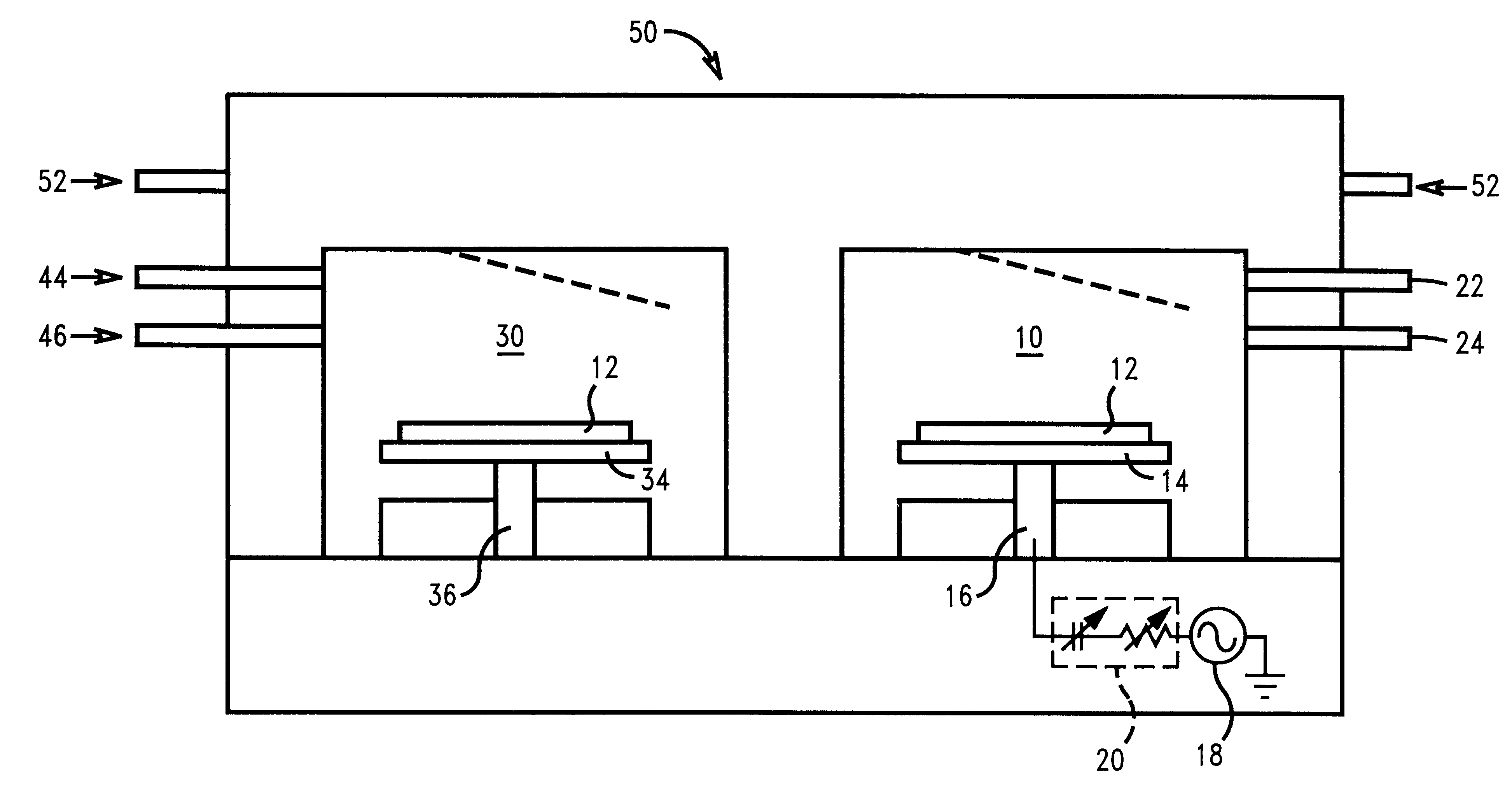Integrated cobalt silicide process for semiconductor devices
a cobalt silicide and semiconductor technology, applied in semiconductor devices, thin material processing, electrical equipment, etc., can solve the problems of uneven resistance and leakage of cobalt silicide on the surface of silicon substrate, inconvenient wafer-to-wafer removal, and inability to uniformly remove native oxid
- Summary
- Abstract
- Description
- Claims
- Application Information
AI Technical Summary
Benefits of technology
Problems solved by technology
Method used
Image
Examples
Embodiment Construction
)
In describing the preferred embodiment of the present invention, reference will be made herein to FIG. 1 of the drawings in which like numerals refer to like features of the invention. Features of the invention are not necessarily shown to scale in the drawing.
It has been found that by eliminating the exposure of a silicon substrate to air after cleaning or removing oxide from the surface of a semiconductor substrate, the probability of native oxide forming on the surface of the silicon substrate is greatly reduced or eliminated. This permits the formation of a uniform silicide layer, such as cobalt silicide, across the surface of the substrate. By integrating the oxide removal process and metal deposition process under a constant vacuum, the cleaned substrate is not exposed to air between steps. In the formation of cobalt silicide, eliminating the exposure to air of the cleaned substrate results in a much more uniform cobalt silicide layer, heretofore not seen in the prior art wit...
PUM
 Login to View More
Login to View More Abstract
Description
Claims
Application Information
 Login to View More
Login to View More - R&D
- Intellectual Property
- Life Sciences
- Materials
- Tech Scout
- Unparalleled Data Quality
- Higher Quality Content
- 60% Fewer Hallucinations
Browse by: Latest US Patents, China's latest patents, Technical Efficacy Thesaurus, Application Domain, Technology Topic, Popular Technical Reports.
© 2025 PatSnap. All rights reserved.Legal|Privacy policy|Modern Slavery Act Transparency Statement|Sitemap|About US| Contact US: help@patsnap.com


